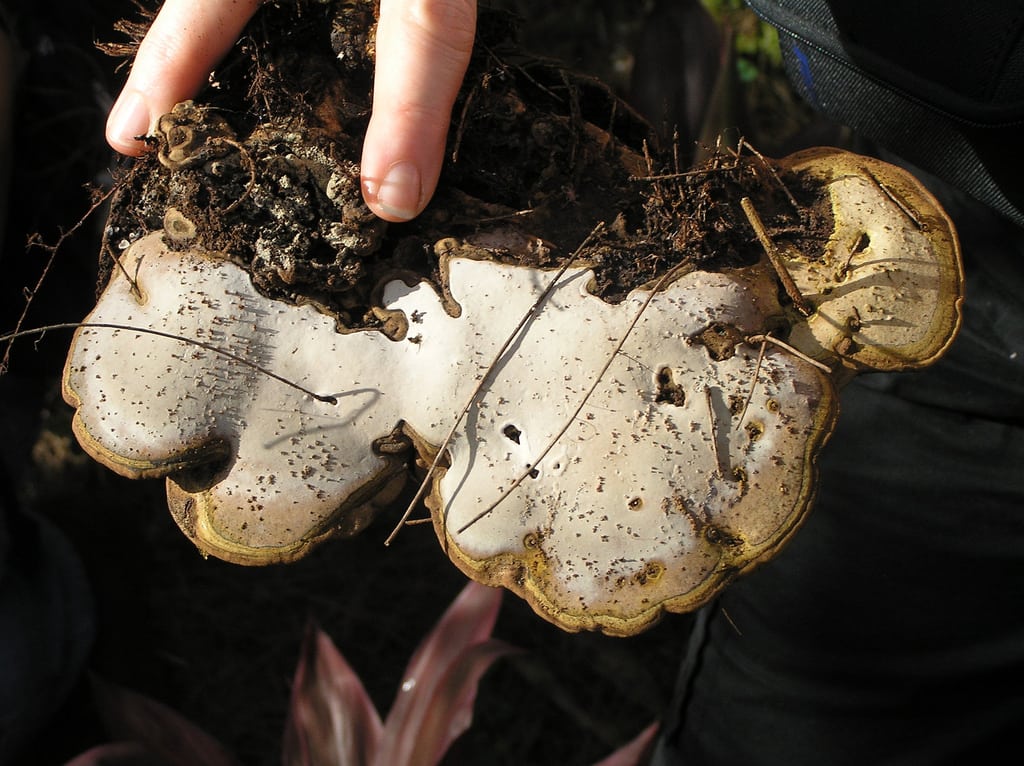What Is Ganoderma Rot – Learn How To Control Ganoderma Disease


Ganoderma root rot includes not one but several different diseases that could impact your trees. It includes root rots caused the different Ganoderma fungi that attack maples, oaks, and honey locust trees, among others. If your landscaping includes these or other deciduous trees, you’ll want to learn about Ganoderma symptoms so that you can quickly identify trees attacked by Ganoderma disease. Read on for info on the Ganoderma fungus.
What is Ganoderma Rot?
Many people have never heard of Ganoderma root rot and wonder what it is. This serious rot disease is caused by a Ganoderma fungus. If you have deciduous trees in your yard, they may be susceptible to attack. Sometimes conifers are vulnerable to Ganoderma disease as well. If one of your trees has this disease, you will see definite Ganoderma symptoms, which causes the decay of the heartwood. The leaves may yellow and wilt and entire branches may die as the decay advances. Look for fruiting bodies that resemble little shelves on the lower trunk. These are conks and generally one of the early Ganoderma symptoms. The two main types of Ganoderma root rot fungus are called varnished fungus rot and unvarnished fungus rot. The upper surface of varnished fungus rot looks shiny and is usually a mahogany color trimmed in white. Unvarnished fungus rot conks are the same colors but not shiny.
Ganoderma Root Rot Treatment
If you learn that your trees have root rot from seeking the conks, unfortunately, there’s really nothing you can do to help. The heartwood will continue to decay and can kill a tree in as little as three years. If a tree is stressed in other ways, it will die sooner than vigorous trees. The Ganoderma fungus will ultimately damage the structural integrity of the tree, when strong wind or storms may uproot it. You won’t find anything available in commerce to control this type of disease. Use the best cultural practices to keep your trees as healthy as possible, and avoid damaging trunks and roots when you work in the yard.
Gardening tips, videos, info and more delivered right to your inbox!
Sign up for the Gardening Know How newsletter today and receive a free copy of our e-book "How to Grow Delicious Tomatoes".

Teo Spengler is a master gardener and a docent at the San Francisco Botanical Garden, where she hosts public tours. She has studied horticulture and written about nature, trees, plants, and gardening for more than two decades. Her extended family includes some 30 houseplants and hundreds of outdoor plants, including 250 trees, which are her main passion. Spengler currently splits her life between San Francisco and the French Basque Country, though she was raised in Alaska, giving her experience of gardening in a range of climates.
-
 Get Ready For A Summer Of Hummers! Grow These Full Sun Hummingbird Plants and Flowers
Get Ready For A Summer Of Hummers! Grow These Full Sun Hummingbird Plants and FlowersIf you’re lucky enough to enjoy a sunny backyard, make sure you are maxing out on your pollinator opportunities and grow these full sun hummingbird plants and flowers
By Tonya Barnett
-
 12 Lush Alternatives To A Lawn For Sustainable Spaces
12 Lush Alternatives To A Lawn For Sustainable SpacesAlternatives to a lawn are beautiful and also beneficial to your local ecosystem and its pollinators. Explore our top picks for plants to replace grass.
By Tonya Barnett
-
 Best Trees For Carbon Sequestration And Climate Change
Best Trees For Carbon Sequestration And Climate ChangeLet’s keep planting trees. They are our best bet for capturing carbon and may help with our global warming issues.
By Teo Spengler
-
 7 Invasive Trees You Should Never Plant In Your Yard Or Garden
7 Invasive Trees You Should Never Plant In Your Yard Or GardenWhat are some invasive trees you should never plant in your yard? Click here to find out.
By Teo Spengler
-
 How Close Can You Plant A Tree To A Stump?
How Close Can You Plant A Tree To A Stump?Looking to plant new trees near old stumps or where stumps have been removed? Click here to learn how.
By Teo Spengler
-
 Messiest Trees That Drop Debris Everywhere
Messiest Trees That Drop Debris EverywhereWant to know which trees will create the biggest messes in your home landscape? Click here to find out.
By Amy Grant
-
 How To Get Rid Of Tree Sprouts In The Yard From Nearby Trees
How To Get Rid Of Tree Sprouts In The Yard From Nearby TreesLearn the simple way to keep pesky tree seedlings in your lawn from becoming saplings.
By Teo Spengler
-
 How To Tell How Old A Tree Is
How To Tell How Old A Tree IsEver wondered how to calculate the age of a tree? Click here to learn all about it.
By Teo Spengler
-
 When To Remove Tree Stakes From Saplings
When To Remove Tree Stakes From SaplingsA newly planted tree may grow strong when it’s staked, but don’t forget to remove the stakes when it’s stable.
By Teo Spengler
-
 Inosculation And Trees Growing Together
Inosculation And Trees Growing TogetherIf you ever see two trees that have bonded and grown together, read here to learn why and how it happens.
By Teo Spengler